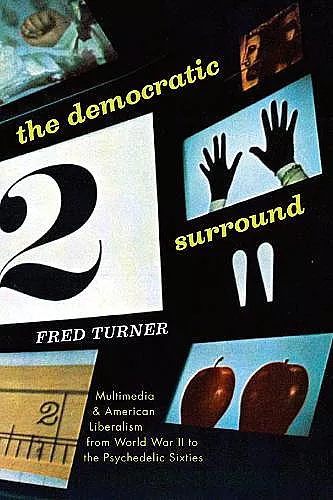The Democratic Surround
Multimedia and American Liberalism from World War II to the Psychedelic Sixties
Format:Hardback
Publisher:The University of Chicago Press
Published:10th Jan '14
Currently unavailable, and unfortunately no date known when it will be back

We commonly think of the psychedelic '60s as an explosion of creative energy and freedom that arose in direct revolt against the early Cold War years. Yet, as Fred Turner reveals in The Democratic Surround, the decades that brought us the Korean War and communist witch hunts also witnessed an extraordinary turn toward explicitly democratic, open, and inclusive ideas of communication and with them new, flexible models of social order. Surprisingly, he shows that it was this turn that brought us the revolutionary multimedia and the wild-eyed individualism of the '60s counterculture. From the Museum of Modern Art in New York to the New Bauhaus in Chicago and Black Mountain College in North Carolina, Turner shows how some of the most well-known artists and intellectuals of the '40s developed new models of media, new theories of interpersonal and international collaboration, and new visions of an open, tolerant, and democratic self in direct contrast to the repression and conformity associated with the fascist and communist movements. He then shows how their work shaped some of the most significant media events of the Cold War and how by the end of the '50s this vision of the democratic self and the media built to promote it would actually become part of the mainstream, even shaping American propaganda efforts in Europe. Overturning common misconceptions of these transformational years, The Democratic Surround shows that the artistic and social radicalism of the '60s grew out of the liberal ideas of Cold War America, a democratic vision that still underlies our hopes for digital media today.
"In what will surely be a controversial revision, Fred Turner maps the attempts of social scientists, industrial designers, European expats and others to mold democratic personalities as a bulwark against authoritarianism, forming a civil foundation upon which arose spatial media experiments of the arts and counterculture of the 1960s. From an Americana more associated with Aaron Copeland comes the radical surround sound of John Cage; from image management of psyches, psychedelic media environments." -Douglas Kahn, author of Noise, Water, Meat: A History of Sound in the Arts"
ISBN: 9780226817460
Dimensions: 24mm x 16mm x 3mm
Weight: 652g
376 pages